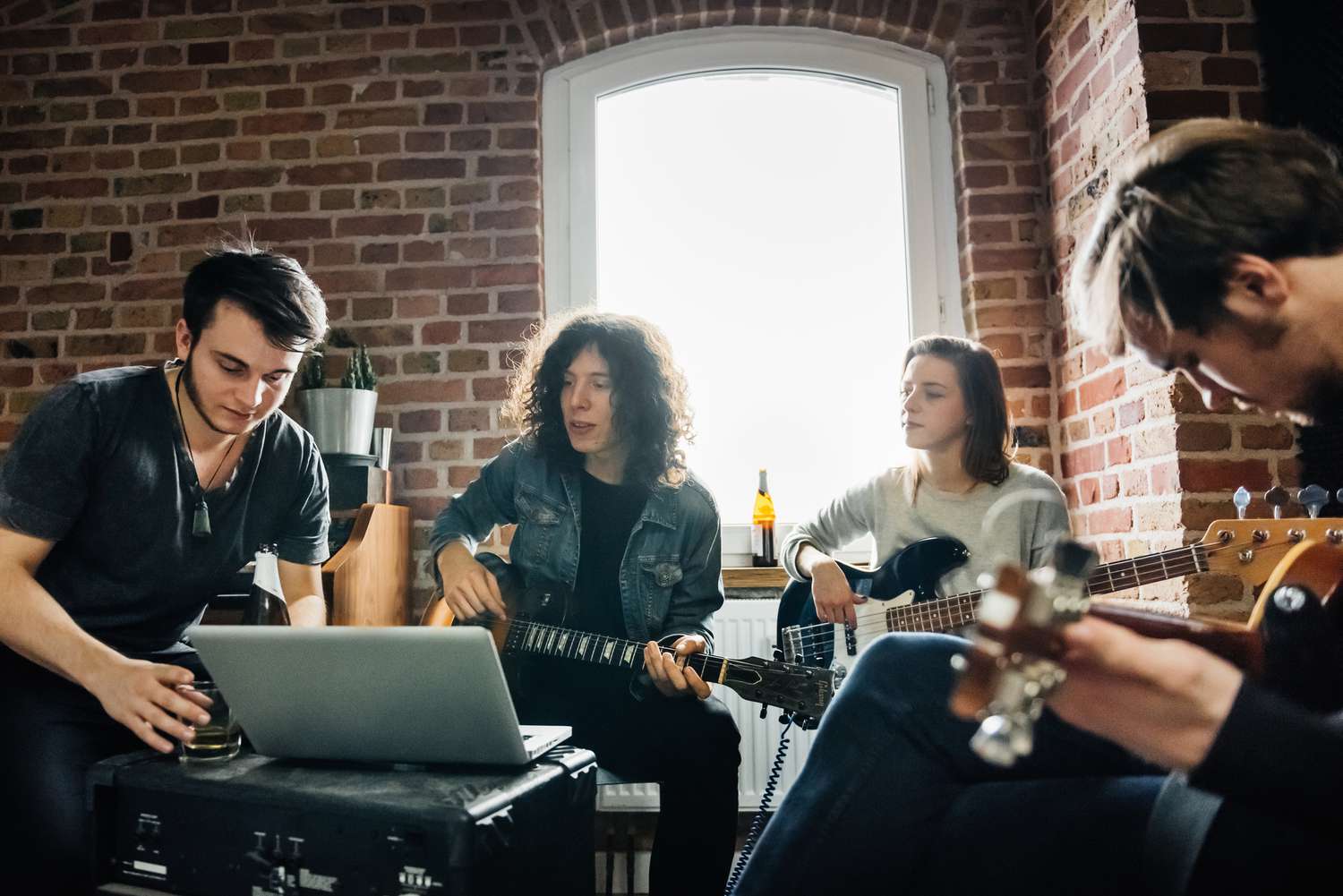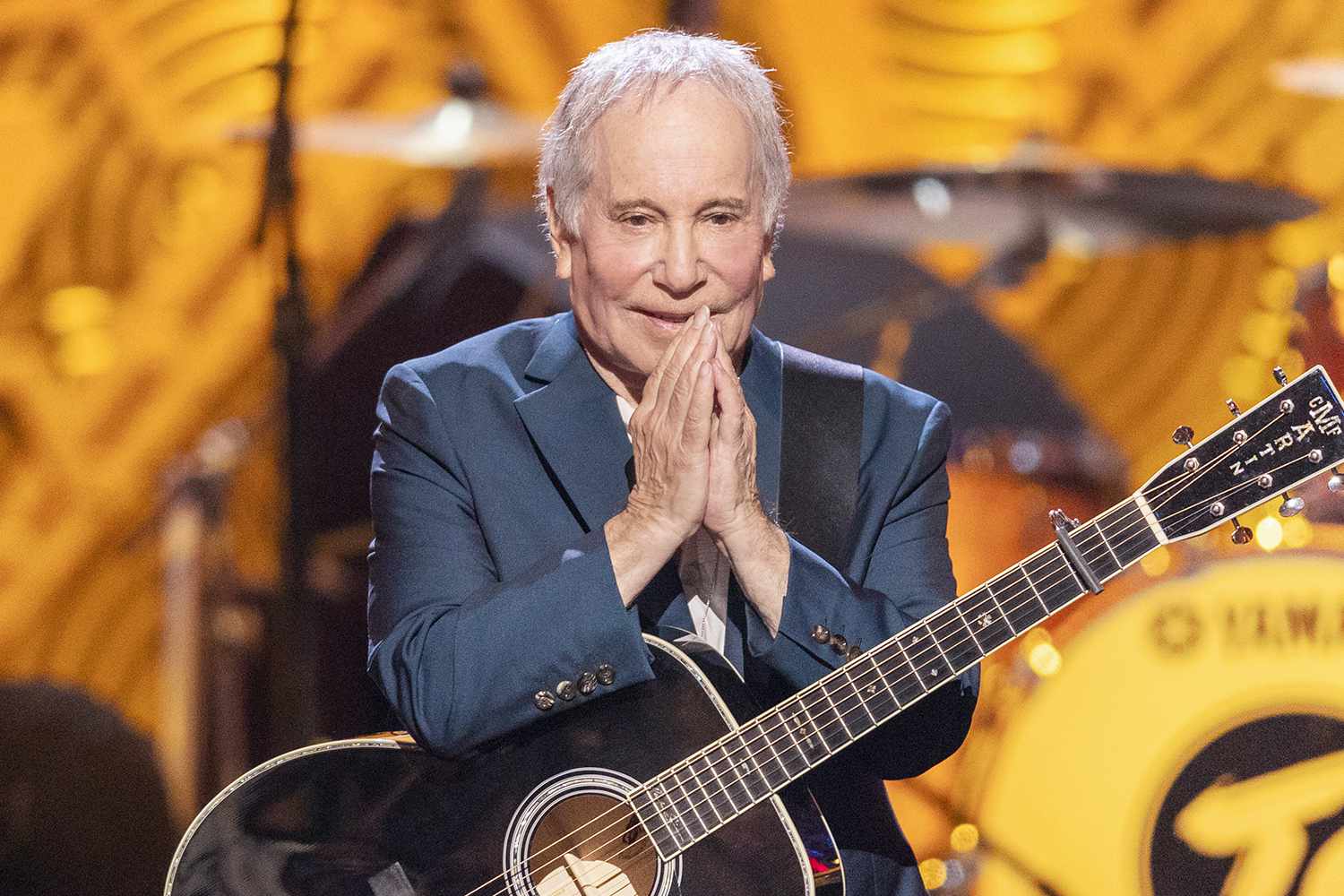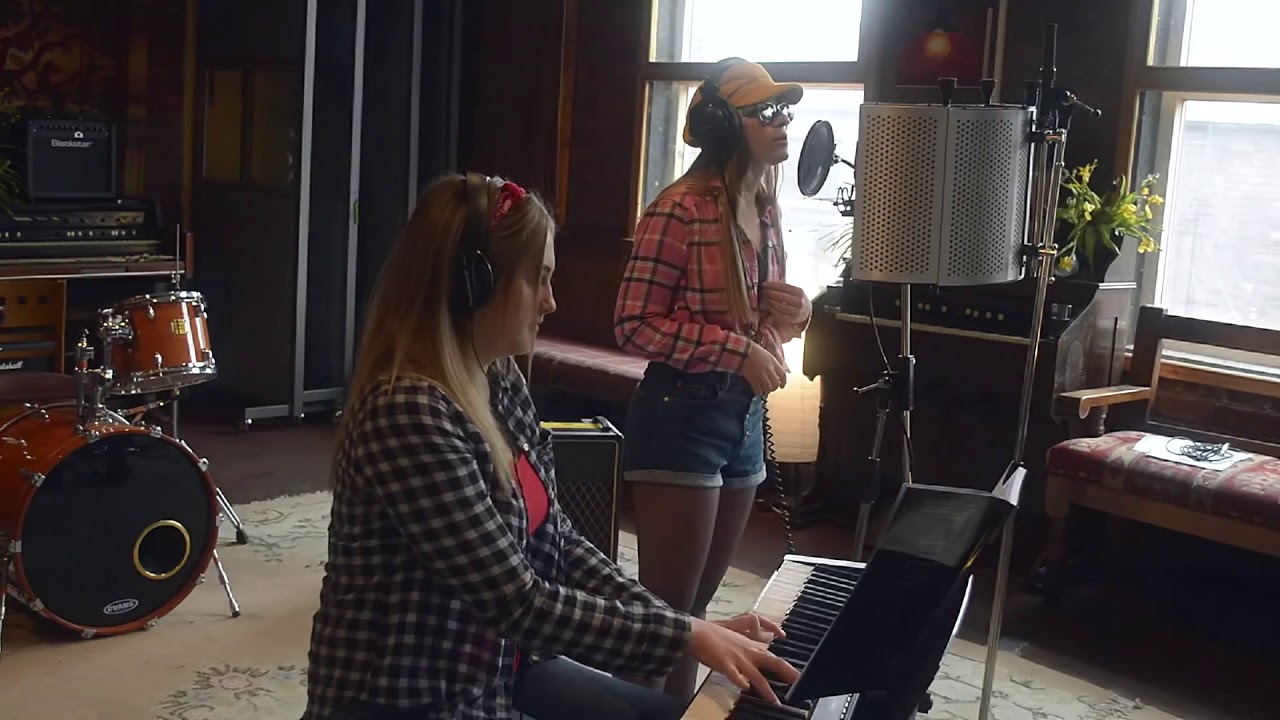Home>Production & Technology>Cover Song>What Is A Bands Responsibility When Playing A Cover Song


Cover Song
What Is A Bands Responsibility When Playing A Cover Song
Modified: January 22, 2024
Discover the bands' responsibilities when performing a cover song, from obtaining proper licenses to respecting the original artist's work. Learn more about the legal and ethical aspects of covering songs.
(Many of the links in this article redirect to a specific reviewed product. Your purchase of these products through affiliate links helps to generate commission for AudioLover.com, at no extra cost. Learn more)
Table of Contents
- Introduction
- Understanding the Concept of a Cover Song
- Legal and Copyright Considerations
- Obtaining Proper Licensing and Permission
- Giving Credit to the Original Artist
- Musical Arrangements and Interpretations
- Faithfully Reproducing the Original vs. Adding a Unique Twist
- Engaging the Audience with Familiar Songs
- Acknowledging and Respecting the Original Artist’s Work
- Communicating with the Venue or Event Organizer
- Conclusion
Introduction
Cover songs have been a beloved part of the music industry for decades. Whether it’s a local band performing a classic hit, or a famous artist putting their own spin on a popular track, cover songs have the power to entertain, inspire, and bring people together. But what exactly is a band’s responsibility when playing a cover song?
At first glance, it may seem as simple as choosing a song, learning the chords, and performing it on stage. However, there are legal and copyright considerations, as well as ethical responsibilities that every band should be aware of. In this article, we’ll delve into the world of cover songs and explore the various aspects that bands need to consider when performing someone else’s music.
Understanding the Concept of a Cover Song
Before we dive into the responsibilities associated with cover songs, let’s first understand what a cover song actually is. A cover song is a new rendition or performance of an existing song originally written and recorded by another artist. It’s important to note that a cover song is not the same as sampling or remixing, which involve using parts of a song or altering its composition.
Legal and Copyright Considerations
One of the key responsibilities for bands playing cover songs is to ensure that they comply with legal and copyright requirements. Copyright laws grant exclusive rights to the original artist to reproduce, distribute, and perform their work. When a band performs a cover song, they are essentially reproducing and performing someone else’s copyrighted material.
Without proper licensing and permission, bands can face legal consequences and financial penalties for copyright infringement. It’s important for bands to understand the legal landscape and comply with the necessary regulations to protect themselves and respect the rights of the original artist.
Understanding the Concept of a Cover Song
Before we delve into the responsibilities that come with playing a cover song, it is essential to have a clear understanding of what a cover song actually is. A cover song is a new interpretation or performance of an existing song that was originally written and recorded by another artist. It is a way for musicians to pay homage to their musical influences and showcase their own creative talents.
When a band decides to perform a cover song, they are essentially taking someone else’s work and putting their own unique spin on it. This can involve rearranging the instrumentation, changing the tempo, or even altering the overall genre of the song. The goal is to create a rendition that stands out while still capturing the essence of the original composition.
What sets cover songs apart from other forms of musical expression, such as sampling or remixing, is that cover songs involve a complete reimagining of the original work. While sampling typically involves using portions of an existing song within a new composition and remixing focuses on altering the production elements, cover songs are more about recreating the entire musical piece in a fresh and distinct way.
Cover songs have been a staple in popular music for decades. Many iconic artists have gained recognition by releasing their own versions of well-known songs. From Jimi Hendrix’s legendary rendition of “All Along the Watchtower” to Whitney Houston’s captivating performance of “I Will Always Love You,” cover songs have the power to breathe new life into familiar melodies and create lasting impressions.
In addition to being a means of artistic expression, cover songs also serve as a way for musicians to connect with their audience on a deeper level. Most people have a strong emotional connection to certain songs, and when a band performs a cover, it can evoke nostalgia and create a shared experience. Cover songs have the ability to bridge generations and bring people together through the universal language of music.
Overall, cover songs allow musicians to pay tribute to their musical influences, showcase their creativity, and establish a connection with their audience. They offer a unique opportunity for artists to demonstrate their versatility and interpret well-known songs in their own personal style. However, performing cover songs comes with certain responsibilities, both legal and ethical, that musicians must be aware of to ensure a respectful and successful rendition of someone else’s work.
Legal and Copyright Considerations
When it comes to playing cover songs, bands must navigate the complex landscape of legal and copyright considerations. Copyright laws grant exclusive rights to the original artist to reproduce, distribute, and perform their work. This means that performing a cover song without proper licenses or permissions can potentially infringe upon the rights of the original artist.
Before a band can perform a cover song in public, they need to obtain the necessary licenses or permissions to avoid legal troubles. There are different types of licenses available, depending on the specific use of the cover song. These include mechanical licenses for reproducing and distributing recordings of the cover song, and performance licenses for live performances or public broadcasts.
Obtaining the appropriate licenses can be a complex and time-consuming process. Fortunately, there are organizations known as performing rights organizations (PROs) that simplify this process by representing songwriters and publishers and granting licenses on their behalf. PROs, such as ASCAP, BMI, and SESAC, collect royalties from venues and event organizers and distribute them to the original songwriters and publishers.
It’s important for bands to do their due diligence and identify the right PROs to work with, ensuring that all necessary licenses and permissions are obtained for the cover songs they plan to perform. This not only keeps the band in compliance with copyright laws but also ensures that the original artists receive proper compensation for their work.
In addition to licensing, another important consideration is giving proper credit to the original artist. Bands should always acknowledge the original songwriter and give credit where it is due. This can be done verbally during a performance or included in any promotional or marketing materials. Giving credit not only shows respect for the original artist’s work but also helps to avoid any misunderstandings or conflicts in the future.
By understanding and addressing these legal and copyright considerations, bands can confidently perform cover songs without infringing upon the rights of the original artists. It is crucial to respect the hard work and creativity of others while still being able to showcase one’s own musical abilities.
Obtaining Proper Licensing and Permission
One of the key responsibilities that bands must fulfill when performing cover songs is obtaining the necessary licensing and permissions. This ensures that they are legally allowed to reproduce, distribute, and perform someone else’s copyrighted material.
The first step in obtaining proper licensing is to determine the type of license required for the intended use of the cover song. For example, if the band plans to record and distribute a cover song as part of an album or single, they would need a mechanical license. This license grants them the right to reproduce and distribute the recorded version of the song.
There are several ways to obtain mechanical licenses. One option is to work directly with the original artist or their representatives to negotiate the terms and obtain a license agreement. However, this can be a complex and time-consuming process, especially if the original artist is not easily accessible.
An alternative approach is to work with a music licensing agency that specializes in securing licenses for cover songs. These agencies have established relationships with music publishers and can streamline the licensing process for bands. They take care of the paperwork, negotiations, and payment of royalties, allowing the band to focus on their music.
It’s important to note that the cost of obtaining a mechanical license can vary depending on factors such as the popularity of the song, the intended use, and the negotiated terms. Bands should budget for these licensing fees as part of their overall music production expenses.
Aside from mechanical licenses, bands also need to obtain performance licenses if they plan to perform cover songs in a live setting. Performance licenses ensure that the appropriate royalties are paid to the original songwriter and publisher when the song is performed in public.
Performance licenses are typically obtained through performing rights organizations (PROs) such as ASCAP, BMI, and SESAC. These organizations collect royalties from venues and event organizers and distribute them to the songwriters and publishers. Bands can join a PRO and obtain performance licenses as needed.
It’s worth mentioning that in some cases, venues or event organizers may already have blanket licenses from PROs that cover a wide range of musical performances, including cover songs. However, bands should always double-check with the venue or event organizer to ensure that all necessary licenses are in place.
By taking the necessary steps to obtain proper licensing and permission for cover songs, bands can perform with peace of mind, knowing that they are operating within the legal framework and respecting the rights of the original artists. It’s an essential responsibility that ensures a fair and lawful use of copyrighted material.
Giving Credit to the Original Artist
When performing a cover song, it is essential for bands to give proper credit to the original artist. Giving credit not only shows respect for the creator of the song but also helps to avoid any legal issues and maintain a positive reputation within the music community.
One of the simplest ways to give credit is by verbally acknowledging the original artist during live performances. Before or after playing a cover song, the band can mention the name of the original artist and express their appreciation for the song. This not only acknowledges the source of inspiration but also allows the audience to be aware of the original work.
In addition to live performances, it’s important for bands to give credit to the original artist on any promotional or marketing materials related to the cover song. This includes album covers, music videos, social media posts, and websites. By clearly stating the name of the original artist, bands demonstrate transparency and respect.
Another way to provide credit is through album liner notes or digital music platforms. Bands can include a note specifying that the song is a cover and mention the original artist. This helps listeners easily identify the source of the song and can also serve as an opportunity to share more about the band’s interpretation or personal connection to the song.
It’s worth mentioning that the way credit is given may vary depending on the specific requirements of the licensing agreements or permissions obtained. Some licensing agreements may require specific language or format for providing credit, and it’s important for bands to adhere to those guidelines.
By giving credit to the original artist, bands not only fulfill their ethical responsibilities but also contribute to the recognition and exposure of the original work. This can lead to new fans discovering and appreciating the music of the original artist.
Moreover, by properly crediting the original artist, bands can build a positive reputation within the music industry. Word spreads quickly in the music community, and bands that show respect and acknowledgement for the work of others are more likely to be seen as professional and collaborative.
Overall, giving credit to the original artist is a crucial aspect of performing cover songs. It demonstrates integrity, promotes transparency, and fosters a culture of respect within the music community. It’s a responsibility that all bands should take seriously while sharing their love and interpretation of someone else’s music.
Musical Arrangements and Interpretations
One of the exciting aspects of playing cover songs is the opportunity for bands to create their own unique arrangements and interpretations of the original material. While staying true to the essence of the song, bands can add their own creative flair and personal touch to make the rendition distinctively theirs.
When approaching a cover song, bands can explore different musical arrangements to bring a fresh perspective to the music. This could involve changing the instrumentation, altering the tempo, or experimenting with new harmonies. By doing so, bands can put their own creative stamp on the song while still honoring its fundamental melody and structure.
Interpretation is key when it comes to cover songs. Bands should aim to infuse their own style and personality into the performance, allowing their unique musical identity to shine through. This can be done through vocal delivery, instrumental solos, or even adapting the song to a different genre.
While it’s important to make the cover song your own, it’s also crucial to strike a balance between creativity and maintaining the core familiarity of the original composition. The audience should still be able to recognize the song and connect with it emotionally, even if it has been reimagined in a new and exciting way.
Additionally, bands can draw inspiration from other cover versions of the same song. By researching different interpretations, bands can gain new insights and ideas for their own arrangement. This can lead to a more unique and thoughtful rendition that stands out from the crowd.
It’s important to mention that while adding your own creative flourishes to a cover song is encouraged, bands should always be mindful of the original artist’s intentions and the overall integrity of the composition. Straying too far from the original may result in losing the essence of the song and alienating the audience’s connection to it.
Ultimately, the goal of musical arrangements and interpretations of cover songs is to offer a fresh perspective and engaging experience to the audience. It allows bands to showcase their artistic abilities, creativity, and musicality while paying homage to the original artist and song.
By carefully considering and crafting the musical arrangements and interpretations of cover songs, bands can create memorable and captivating performances that leave a lasting impression on the listeners. It’s an opportunity to demonstrate one’s musical prowess and showcase the beauty of reinterpretation in the world of music.
Faithfully Reproducing the Original vs. Adding a Unique Twist
When it comes to playing cover songs, bands often face the decision of whether to faithfully reproduce the original version or add their own unique twist to the song. Both approaches have their merits, and the choice ultimately depends on the artistic direction and vision of the band.
One approach is to faithfully reproduce the original version of the song. This involves staying true to the original composition, maintaining the same arrangement, melody, and overall feel. Faithful reproductions are often appreciated by fans who enjoy hearing their favorite songs performed as close to the original as possible.
Reproducing a cover song faithfully requires careful attention to detail. It involves studying the original recording and paying close attention to nuances such as vocal phrasing, instrumental patterns, and overall dynamics. By faithfully recreating the original, bands can pay homage to the artist and showcase their musical skills and ability to accurately replicate the essence of the song.
On the other hand, bands may opt to add a unique twist to the cover song, infusing it with their own creative style and interpretation. This approach allows for greater artistic freedom and personal expression. By adding a unique twist, bands can put their own stamp on the song and showcase their individuality.
Adding a unique twist can involve changing the tempo, rewriting certain sections, or experimenting with different instrumentation. It allows bands to bring new life to familiar songs and showcase their creativity. This approach is often favored by artists who want to differentiate themselves and offer a fresh perspective on well-known material.
When deciding whether to faithfully reproduce the original or add a unique twist, bands should take into consideration the expectations of the audience and the purpose of the performance. If the goal is to create a nostalgic and familiar experience, faithful reproduction may be the preferred approach. However, if the aim is to captivate and surprise the audience, adding a unique twist can be a powerful way to do so.
It’s important to strike a balance between faithfulness to the original and the band’s own creative expression. By offering a fresh interpretation without losing the essence of the song, bands can create memorable performances that resonate with listeners on both emotional and artistic levels.
Whether a band chooses to faithfully reproduce the original or add a unique twist, it’s important to approach the song with respect and integrity. Understanding the intentions of the original artist and the emotional impact of the song can guide bands in making a decision that is authentic and meaningful.
In the end, both approaches have their place in the world of cover songs. The key is to stay true to the spirit of the song while bringing a fresh perspective that highlights the band’s artistic identity and musical abilities.
Engaging the Audience with Familiar Songs
One of the powerful aspects of playing cover songs is the ability to engage the audience through the familiarity of well-known songs. When bands perform familiar songs that the audience already loves and connects with, it creates an immediate bond and captivates their attention.
Familiar songs have a way of evoking emotions and memories within listeners. They transport people back to specific moments in their lives and bring back feelings of joy, nostalgia, or even sadness. By tapping into this emotional connection, bands can create a deep and meaningful experience for the audience.
Engaging the audience with familiar songs is about creating a shared experience. When the audience recognizes a cover song, there is a sense of excitement and anticipation. Singing along, swaying to the music, or even dancing are all ways in which the audience actively participates in the performance. It fosters a sense of unity and creates a special bond between the band and the audience.
However, engaging the audience with familiar songs goes beyond simply playing the songs as they are. It requires the band to bring their own energy, charisma, and unique interpretation to the performance. This could involve showcasing their vocal prowess, adding instrumental improvisations, or injecting their own personal style into the song.
Additionally, bands can incorporate elements of surprise and novelty to keep the audience engaged. This could involve unexpected mashups, medleys, or creative vocal arrangements. By infusing these unique touches, bands can transform familiar songs into exciting and unforgettable moments during their live performances.
When planning a setlist, bands should consider the demographics and musical preferences of their audience. Selecting familiar songs that resonate with the specific crowd can enhance the overall audience engagement and create an electric atmosphere.
Moreover, bands can also consider incorporating audience participation into their performances. This could involve encouraging the audience to sing along to certain parts of the song, clapping or stomping along to the beat, or even inviting a select few audience members to join in on stage for a memorable moment. These interactive experiences further strengthen the connection between the band and the audience.
Ultimately, engaging the audience with familiar songs is a powerful tool for bands to create a memorable and immersive live performance. By tapping into the emotions and memories associated with well-known songs, bands can foster a sense of unity, excitement, and joy that leaves a lasting impression on the audience.
Acknowledging and Respecting the Original Artist’s Work
When performing cover songs, it’s essential for bands to acknowledge and respect the original artist’s work. By recognizing and honoring the contributions of the original artist, bands can showcase their appreciation, maintain authenticity, and build a positive reputation.
One way to demonstrate respect is by giving proper credit to the original artist. This can be done through verbal announcements during live performances, mentioning the original artist’s name before or after playing the cover song. By acknowledging the artist, bands show their awareness and appreciation for the source of inspiration.
Additionally, bands can incorporate a brief explanation or anecdote about the original artist or the inspiration behind the song. This not only provides context for the cover but also helps to create a deeper connection with the audience. It allows listeners to gain insights into the creative process and appreciate the original artist’s work on a more profound level.
Showing respect also means avoiding negative comparisons or criticisms of the original artist’s version. While it’s natural for bands to put their own spin on a cover song, it’s important to do so without diminishing or devaluing the original artist’s interpretation. By focusing on the positive aspects of the original version, bands can demonstrate reverence for the artist’s artistic choices.
In addition to giving credit and avoiding negative comparisons, it’s crucial for bands to obtain the necessary licenses and permissions for performing cover songs. This ensures that the original artist’s rights are protected, and they receive proper compensation for their creative work. Respecting copyright laws and obtaining the appropriate licenses is not only a legal responsibility but also a moral obligation.
Bands should also be mindful of how they represent the original artist’s work in promotional materials and performances. Using the original artist’s name, song titles, or images without permission can be misleading and disrespectful. It’s important to seek proper authorization and adhere to any guidelines provided by the original artist or their representatives.
Lastly, bands should strive to honor the original intentions and spirit of the song. While adding their own interpretation is encouraged, it’s crucial to capture the essence and emotional impact of the original composition. This ensures that the cover song remains a heartfelt homage rather than a complete departure from the original artist’s vision.
By acknowledging and respecting the original artist’s work, bands can establish themselves as professional and considerate musicians within the music community. It strengthens the relationships between artists and promotes a supportive and collaborative environment.
Ultimately, paying tribute to the original artist demonstrates the band’s integrity and appreciation for the rich musical heritage that cover songs offer. It also fosters a deeper understanding and connection with the audience, creating a more meaningful and memorable musical experience for all.
Communicating with the Venue or Event Organizer
When planning to perform cover songs at a venue or event, it is vital for bands to have open and effective communication with the venue or event organizer. This communication ensures that all parties are on the same page regarding the performance and helps to address any logistical or legal considerations related to the cover songs.
First and foremost, bands should inform the venue or event organizer about their intention to perform cover songs. This allows the venue or organizer to be aware of the type of music that will be played and helps them to plan the event accordingly. It also gives them an opportunity to discuss any specific guidelines or requirements they may have for cover song performances.
Additionally, bands should inquire about any licensing requirements or policies that the venue or event organizer may have in place. Some venues may already have blanket licenses that cover a wide range of musical performances, while others may require bands to obtain their own licenses. By being proactive and asking about these licensing obligations, bands can ensure that they are in compliance with the venue’s policies.
Furthermore, it is important for bands to discuss the setlist with the venue or event organizer. This allows them to make any necessary adjustments or suggestions. For example, the venue may have specific guidelines regarding song choices or may want the band to prioritize certain genres or eras of music depending on the event’s theme or audience demographics.
In some cases, the venue or event organizer may already have a preferred list of cover songs that they would like the band to perform. This could be due to requests from previous guests or to maintain consistency with the ambiance of the venue. Being open to these suggestions and accommodating the preferences of the venue or event organizer can help create a mutually beneficial partnership.
During the communication process, it is important for bands to share information about the licensing and permissions they have obtained for the cover songs. This transparency ensures that the venue or event organizer can be confident that the performances are legal and properly licensed. It also establishes a professional and trustworthy relationship between the band and the venue or event organizer.
Additionally, bands should discuss any technical requirements, such as sound equipment or stage setup, with the venue or event organizer. This helps to ensure that everything is in place for a successful performance and prevents any last-minute surprises or issues.
Overall, effective communication with the venue or event organizer is crucial for a smooth and successful cover song performance. It allows both parties to align their expectations, address any legal or logistical considerations, and work together to create an enjoyable and compliant musical experience for all involved.
Conclusion
Performing cover songs is an exciting opportunity for bands to showcase their talent, pay homage to their musical influences, and engage with audiences on a deep and emotional level. However, it comes with various responsibilities that ensure legal compliance, respect for the original artist, and a meaningful connection with the audience.
Understanding the concept of a cover song and differentiating it from sampling or remixing is essential. Bands must navigate the legal and copyright considerations by obtaining the appropriate licenses and permissions. Giving credit to the original artist is a fundamental aspect of performing cover songs, both verbally and through proper documentation.
The decision to faithfully reproduce the original version or add a unique twist to the cover song is a creative choice that adds personality and artistic expression to the performance. Engaging the audience with familiar songs creates a sense of unity and nostalgia, while always acknowledging and respecting the original artist’s work.
Communicating effectively with the venue or event organizer ensures that both parties are aligned in terms of song choices, licensing requirements, and technical aspects. It also fosters a professional and collaborative relationship that contributes to a successful performance.
In conclusion, performing cover songs requires a delicate balance of creativity, legal compliance, and respect for the original artist. By fulfilling these responsibilities, bands can create memorable and engaging performances that celebrate the power of music and the timeless beauty of well-known songs. Whether faithfully reproducing the original or adding their own unique twist, the journey of performing cover songs is an enriching experience for both the band and the audience.











